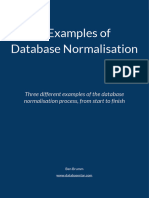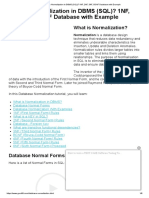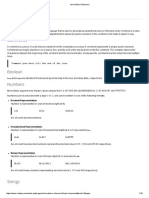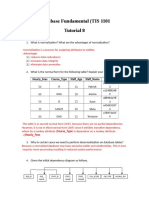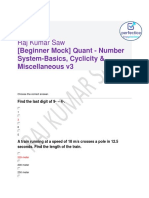0% found this document useful (0 votes)
161 views47 pagesDbms Chapter 3
The document discusses various types of normalization in databases including 1NF, 2NF, 3NF, BCNF, 4NF and 5NF. It defines normalization as a process of organizing data to eliminate anomalies like data redundancy, insertion anomalies, update anomalies, and deletion anomalies. The document provides examples of tables to illustrate different types of normalization forms and how decomposing tables into different normal forms eliminates anomalies and redundancy. It also discusses concepts like functional dependencies, candidate keys, primary keys, and multivalued dependencies in the context of normalization.
Uploaded by
Anurag SrivastavCopyright
© © All Rights Reserved
We take content rights seriously. If you suspect this is your content, claim it here.
Available Formats
Download as PDF, TXT or read online on Scribd
0% found this document useful (0 votes)
161 views47 pagesDbms Chapter 3
The document discusses various types of normalization in databases including 1NF, 2NF, 3NF, BCNF, 4NF and 5NF. It defines normalization as a process of organizing data to eliminate anomalies like data redundancy, insertion anomalies, update anomalies, and deletion anomalies. The document provides examples of tables to illustrate different types of normalization forms and how decomposing tables into different normal forms eliminates anomalies and redundancy. It also discusses concepts like functional dependencies, candidate keys, primary keys, and multivalued dependencies in the context of normalization.
Uploaded by
Anurag SrivastavCopyright
© © All Rights Reserved
We take content rights seriously. If you suspect this is your content, claim it here.
Available Formats
Download as PDF, TXT or read online on Scribd
/ 47















